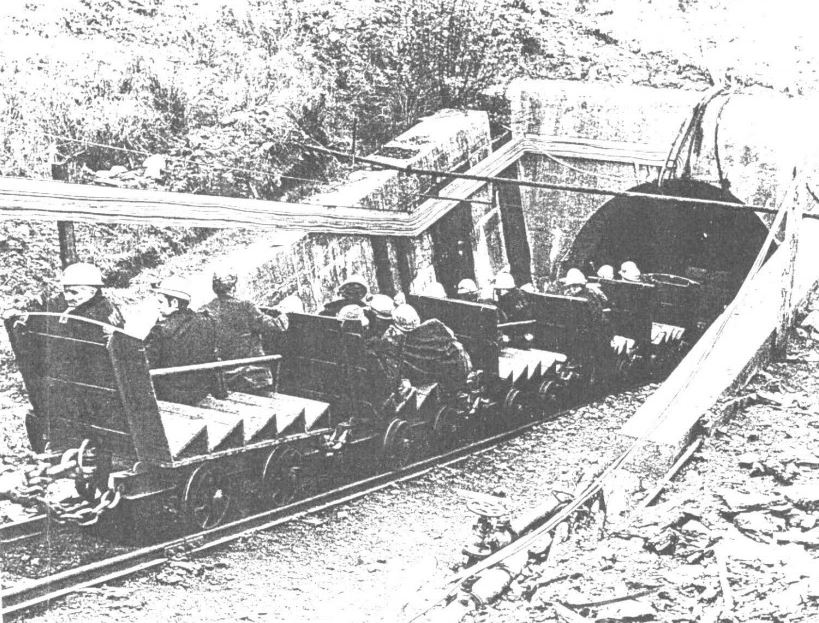 Cross Hands (576104)
Cross Hands (576104)
A National Coal Board anthracite slant that was opened into the Big Vein in 1960, the main drift was 2,067 feet long and dipped at a gradient of 1 in 3. It had a mineral take of just over a mile square and was restricted by two geological faults; the Hendre fault to the east and the Bryngwili fault to the west. It was intended to mine the remaining coal left by the closed Cross Hands Colliery.
By January 1964 it was hitting as the NCB stated “exceptionally high” outputs of 4,000 tons per week and in 1966 it was making the most profit per ton of coal produced than any colliery in the United Kingdom It continued to make a profit in 1967. On the 7th of September 1971, three miners were killed under the same roof fall at this pit.
In 1972 the National Coal Board merged Cwmgwili with the old Lindsay Colliery at a cost of £150,000 in an attempt to extend its life. A new conveyor and bunkering system was installed and the coal production was taken up the Lindsay drift at a maximum rate of 450 tonnes an hour. By 1974 it employed 363 men underground and 42 men on the surface. The strength of feeling at this mine was so strong during the 1972 strike that they withdrew safety men contrary to the advice of the Union.
In 1978 it employed 379 men and produced 126,360 tonnes of coal from the Stanllyd seam with a coalface output per manshift of 3.8 tonnes and an overall output per manshift of 1.5 tonnes. In 1980 it employed 327 men and produced 135,025 tons of coal. Around that time it utilised ten miles of roadways and two miles of conveyors with the workings being 1,200 feet underground. Although officially closed in the early 1980s when the R1 face in the Rock seam hit bad conditions, it had five different geological faults on the coalface and advanced only 6 feet in six weeks, and the remaining pillars in the Stanllyd and Big Vein had been worked. It continued to employ 21 men underground working on the old Pillar and Stall system until 1992.
On privatisation it was bought by UK Consolidated Mining Ltd (1992/93), then Coal Investments Limited 1993/96, and later it was subject to a management buy-out (Jewel Limited), however, this was a failure and Cwmgwili Colliery really closed on the 21st of November 1996.
Some of the seam sections were:
- Ddugaled: 0.75m.
- Stanllyd: 0.75m.
- Gras Uchaf: 0.7m.
- Braslyd: 0.56m.
- Braslyd Fach: 0.44m.
Some Statistics:
- 1962: Manpower: 94.
- 1964: Manpower: 445.
- 1965: Manpower: 278.
- 1969: Manpower: 265.
- 1970: Manpower: 459.
- 1971: Manpower: 417.
- 1972: Manpower: 405.
- 1974: Manpower: 390. Output: 157,000 tons
- 1978: Manpower: 379. Output: 126,360 tons.
- 1979: Manpower: 341. Output: 135,000 tons.
- 1980: Manpower: 327. Output: 135,025 tons.
Information supplied by Ray Lawrence and used here with his permission.
Return to previous page
